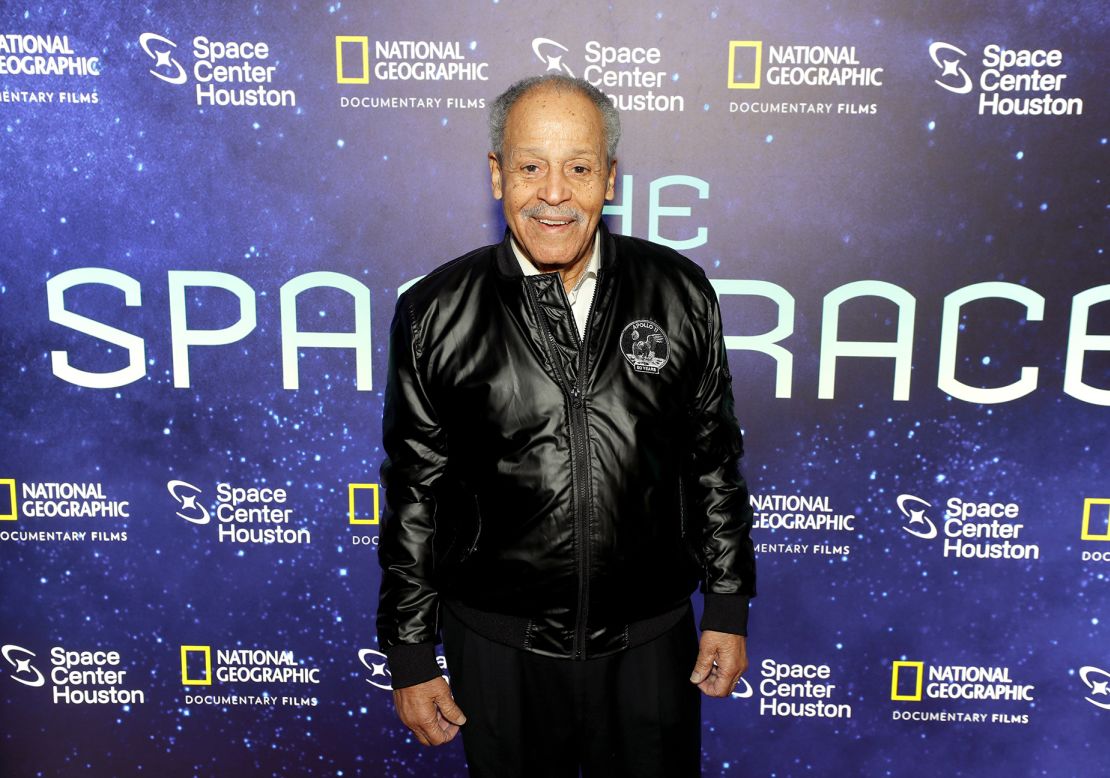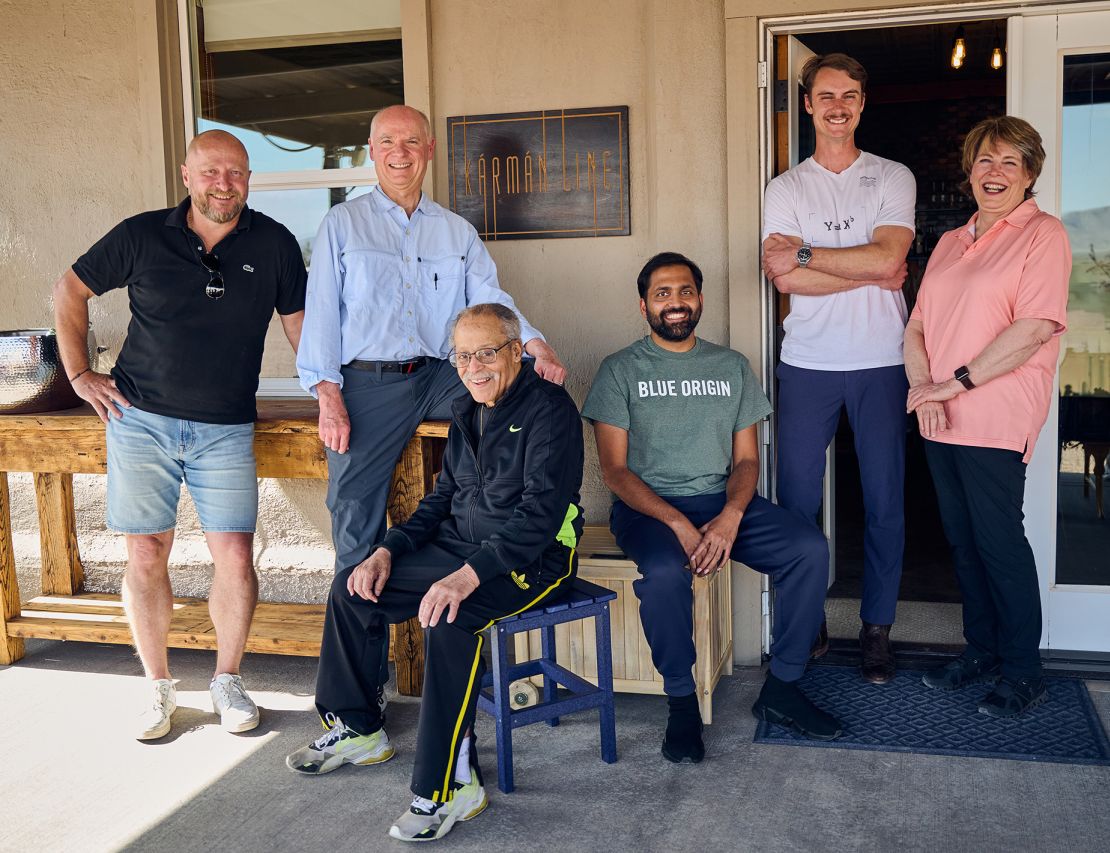Sign up for CNN’s Wonder Theory science newsletter. Explore the universe with news about fascinating discoveries, scientific breakthroughs and more.
CNN
—
Blue Origin’s tourism rocket is poised to send passengers to the edge of space for the first time in nearly two years, ending a hiatus sparked by a failed unmanned test flight.
The New Shepard rocket and capsule lifted off from Blue Origin’s facilities on a private ranch in West Texas during a window opening at 8:30 a.m. CT (9:30 a.m. ET). The expected launch time has been moved to 8:52 am CT (9:52 am ET), a step Sunday update Out of the blue looks. A Live broadcast The mission, called NS-25, will begin at approximately 8:12 am CT (9:12 am ET), according to the Jeff Bezos-founded company’s website.
The NS-25, Blue Origin’s seventh crewed flight, will carry six clients in the capsule: venture capitalist Mason Angel; Sylvain Chiron, founder of French craft brewery Brasserie Mont-Blanc; Software engineer and entrepreneur Kenneth L. Hess; retired accountant Carol Schaller; Pilot Gobi Todakura; and Ed Dwight, 1961 President John F. A retired US Air Force captain selected by Kennedy to become the nation’s first black astronaut.
Although he completed training at Aerospace Research Pilot School and received an Air Force recommendation, Dwight ultimately did not make the NASA astronaut corps. He became an entrepreneur and sculptor; A new National Geographic documentary about black astronauts, “Space Race,” highlights Dwight’s pioneering story.
“I had no intention of becoming an astronaut. That was the last thing on my bucket list,” Dwight said in the documentary. “But once I’m challenged, everything changes.”

Dwight will complete the challenge and reach the edge of space at the age of 90, making him the oldest person to reach such heights, according to a Blue Origin spokesperson.
During the mission, the crew will soar at three times the speed of sound, or more than 2,000 miles per hour. The rocket will pass the capsule past the Karman Line, 62 miles (100 kilometers) above Earth’s surface. Space is widely recognized as a starting point – but there’s a lot of gray area.
At the peak of the flight, passengers will experience a few minutes of weightlessness and spectacular views of the Earth through the cabin windows.
It follows the success of an unmanned science mission in December — a year ago after the New Shepard program’s first flight crashed.
A new Shepard rocket and spacecraft are set to launch a batch of science instruments on September 12, 2022. But during one minute of flight, the rocket has sustained Max Q – which represents the moment of maximum pressure on a vehicle. This happens when the rocket is at a relatively low altitude – the atmosphere is still thick – but the spacecraft is moving at high speeds, which creates severe pressure on the vehicle.
At that moment, the rocket spewed out massive flames. The New Shepherd capsule, riding atop the rocket, activated its launch-apart system — firing a small engine to blast safely away from the defunct rocket. The system worked as planned, parachuted the capsule to a safe landing.
After the blue appearance revealed The cause of the failure was a problem with a large conical engine tip that drove the exhaust burning at the bottom of the rocket. Onboard computers accurately detected the failure and shut down the engine, the company said.

Blue Origin said no injuries were reported on the ground, and the scientific payloads and capsule could be flown again.
But the rocket crashed back to the ground with the engine out of action and destroyed. Normally after New Shepard is launched, the rocket booster guides it to a safe upright landing so it can be flown again.
During a December interview with podcaster Lex Friedman, Bezos said the escape system that sent the capsule to safety was the most difficult piece of engineering in the entire rocket — but that “I’m comfortable letting anyone on New Shepard.”
“The (rocket) booster is as safe and reliable as we can make it,” Bezos added. “The power density is so great that you can’t be sure that nothing will go wrong. … So the only way to improve safety is to have an escape system.
“In my view a touring vehicle should be designed … to be as safe as one can,” he said. “You can’t do it completely safely. It’s impossible.”
Rocket repair and return to service
The Federal Aviation Administration, charged with licensing commercial rocket launches and ensuring public safety, oversaw the investigation into the failure. An investigation revealed that the engine nozzle failed as the company experienced higher temperatures than expected.
To fix the problem, Blue Origin implemented “design changes to the combustion chamber” — the part of the engine where fuel mixes with oxidizer to make it explosive — and adjusted “operating parameters,” or data the company uses to model safe flights.
“Additional design changes to the nozzle have improved structural performance under thermal and dynamic loads,” the company said in March 2023. Report.
The FAA formally concluded the accident investigation on September 27, 2023, requiring 21 “corrective actions” to be implemented before Blue Origin can return to flight. The company did not disclose details of what those measures are. Referring to the statement Contains proprietary data and US export control Information and not available for public release.
The changes, and New Shepard’s successful December flight, have encouraged the company to restart its trips to space for thrill seekers.
Before the September 2022 failure, New Shepard rockets had flown 22 consecutive successful missions — six of them with passengers. Bezos took off on a rocket in 2021. Other notable space tourists previously carried on the vehicle include “Star Trek” actor William Shatner and “Good Morning America” host Michael Strahan.
CNN’s Madeline Holcombe contributed to this report.